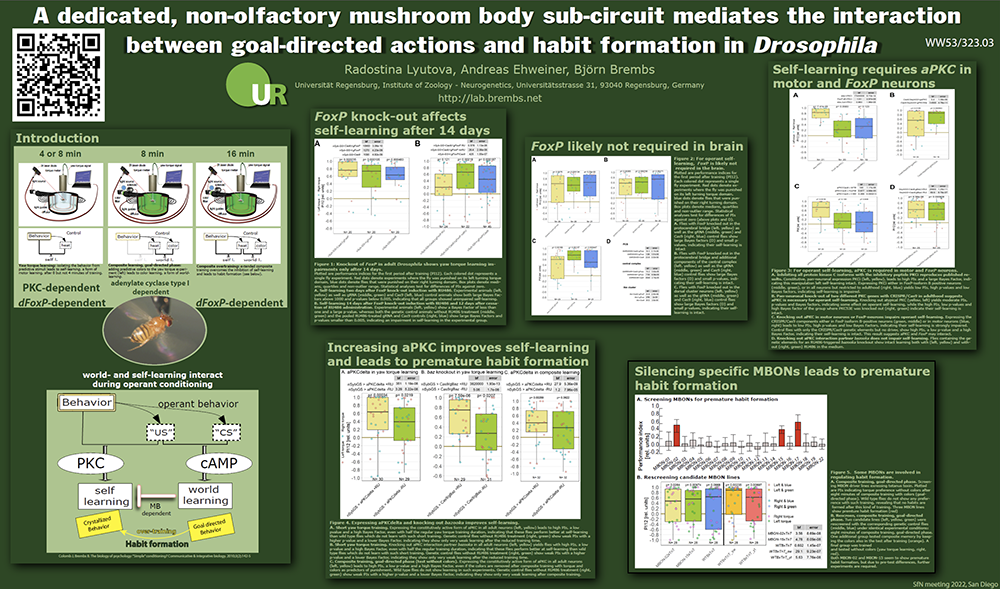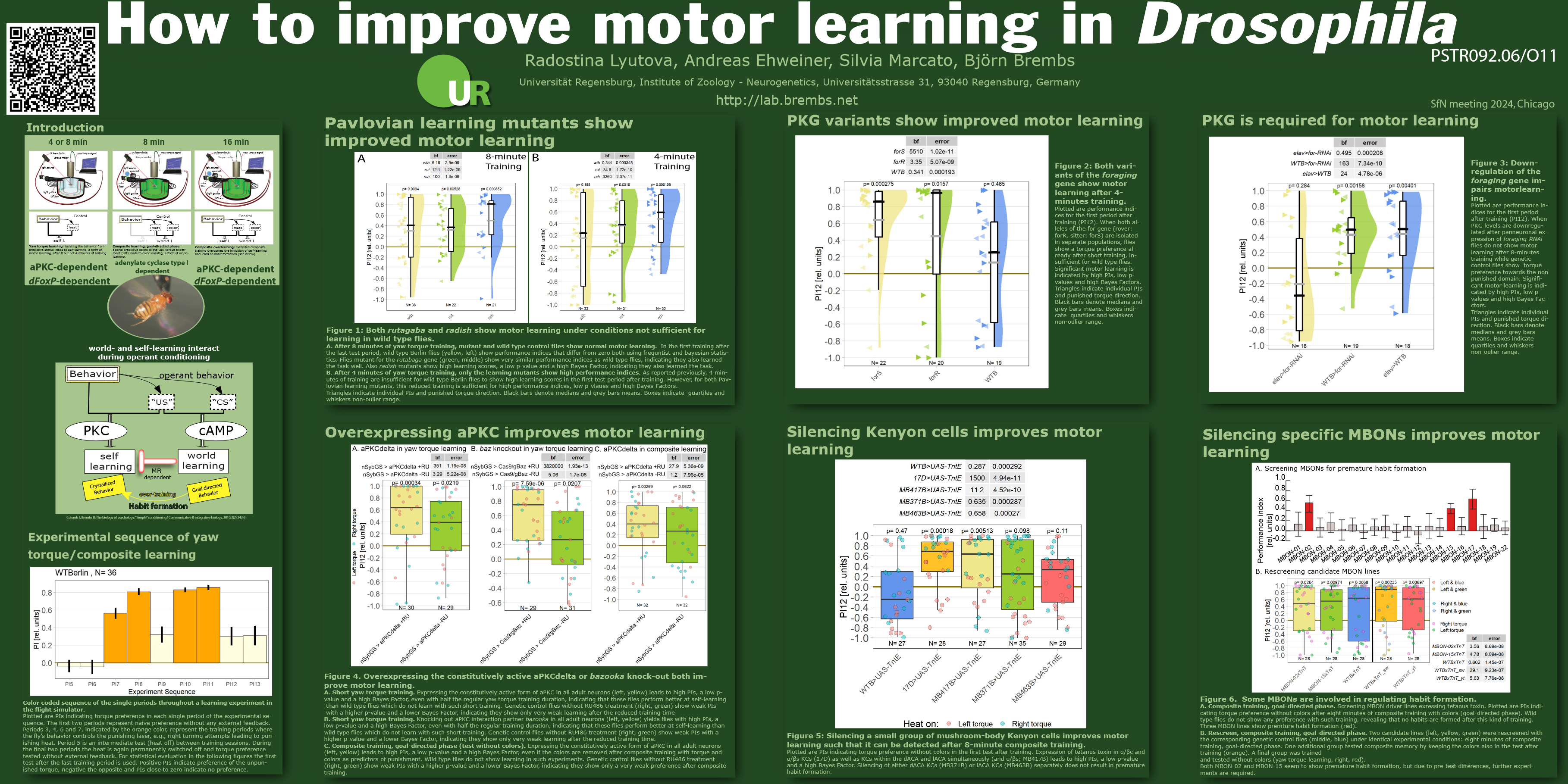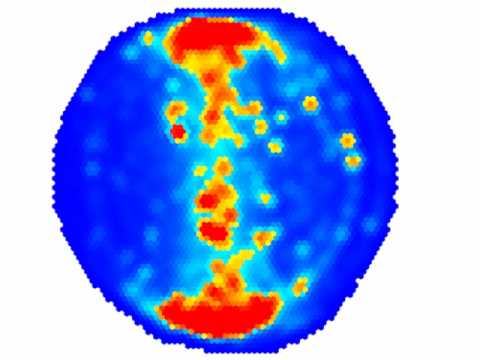I just sent the poster for this year’s Society for Neuroscience meeting to the printer. As our graduate student is preparing his defense and our postdoc did not get a visa (no thanks, US!), we just have a single poster this year and I will present it myself on Monday, November 14, 2022, 8:00 AM – 12:00 PM, on poster board WW53.
Contrary to our plans, this poster will not just contain the work of postdoc Dr. Radostina Lyutova, but also some PhD thesis results from graduate student Andreas Ehweiner. The general topic is how animals learn from the consequences of their actions. To this end, we train Drosophila fruit flies in different situations, with or without genetically manipulated nervous system. In the first situation, the tethered animals control a punishing heat beam with their yaw torque (roughly corresponding to turning attempts around the vertical body axis). In such experiments, wild type animals form a motor memory after 8 minutes of training. We have called the type of learning giving rise to this memory self-learning, because the animals are exclusively learning about their own behavior. This is in contrast to a second, very similar experiment, where we have made one seemingly small, but highly consequential modification. In this ‘composite’ situation, the animal is controlling the heat as before, but now the environment of the fly is colored in either green or blue, depending on the attempted turning direction. In other words, now the animal can not only form a motor memory about the un/punished turning directions, it can also learn which color is associated with heat. We call this form of learning world-learning, because the animal is learning about relationships in the world around it.
More then ten years ago now, we developed tests to probe which learning mechanism is engaged under which circumstances.
For instance, both after yaw torque training (where the self-learning mechanism is engaged) and after composite training, we test for torque preference (i.e., whether a motor memory has been formed) without colors. After eight minutes of torque training, wild type flies show motor memory, while after eight minutes of composite training, no such motor memory can be detected. We are hypothesizing that the world-learning mechanism is engaged in composite training and inhibits the self-learning mechanism. Without colors, the self-learning mechanism is free to operate, so motor memory is formed during torque training.
On the poster, we now show the most recent results on the molecular components of the self-learning mechanism and how the world-learning mechanism inhibits self-learning. We found that the gene for the atypical protein kinase C (aPKC) is necessary for self-learning and that it likely acts in motor neurons that also express the FoxP gene. When we overexpress a constitutively active form of aPKC, this improves self-learning so much, that such flies not only can form a motor memory after 4 minutes of training (not sufficient for learning in wild type flies), but also can overcome the inhibition of motor learning by the world-learning mechanism, such that motor memory is detectable after eight minutes of composite training. Because we knew that this inhibition acts via neurons in the neuropil called the mushroom body, we also screened mushroom body output neurons (MBONs) to find out where the inhibition is transmitted from the mushroom bodies. We silenced these MBONs one category at a time, looking for lines which showed motor memory, similar to the flies with the improved self-learning. we found three candidate lines and the rescreen of these lines is still in progress.
The poster can be downloaded by clicking on the picture below:

















Comments are closed.